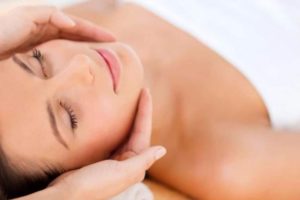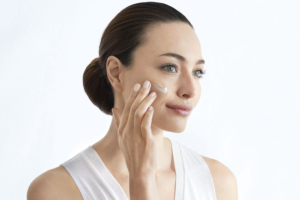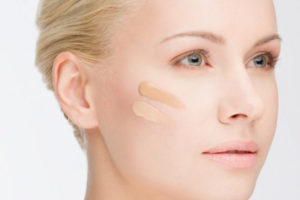
If you have decided to deal with pigmentation at home, be patient for a few months, and choose products according to the situation. We distinguish between hormonal and post-traumatic. Before dealing with the hormonal, you should visit an endocrinologist and find out the reasons. With the second, things are more complicated.
Some home cosmetics products “harass” the production of melanin (dark pigment) – they are mostly used for prevention. Others “try” to lighten the spot that has already appeared. Others do both.
What ingredients you should look for?
 Retinol is a powerful component, the application of which should be approached very carefully, and ideally – under medical supervision. It is worth calculating the dosage precisely so as not to provoke problems such as redness and flaking. You need to start with minimal concentrations (0.1%) to be able to track the skin’s reaction and allow it to get used to it.
Retinol is a powerful component, the application of which should be approached very carefully, and ideally – under medical supervision. It is worth calculating the dosage precisely so as not to provoke problems such as redness and flaking. You need to start with minimal concentrations (0.1%) to be able to track the skin’s reaction and allow it to get used to it.
Vitamin C reduces the production of melanin, destroys it in the surface layers of the epidermis, and enhances collagen synthesis. It is an antioxidant that is easily destroyed by light and air. That is why many brands use this ingredient in dark and maximally airtight packaging.
DescriptionNicotinamide, also known as niacinamide, is a form of vitamin B3 found in food and used as a dietary supplement and medication. This ingredient not only reduces the expressiveness of the spots but also helps the skin’s immune system to resist the harmful effects of sunlight.
Acids come on the front
 Acids are the active ingredient that improves the condition of the skin and is used as a stabilizer in many cosmetic products. For the most part, all the acids used in cosmetics complement each other. But they are divided into several main groups.
Acids are the active ingredient that improves the condition of the skin and is used as a stabilizer in many cosmetic products. For the most part, all the acids used in cosmetics complement each other. But they are divided into several main groups.
Alpha hydroxy acids
Today, glycolic and lactic acids are the most studied. The main effects of their use are exfoliation, moisturizing, whitening, reducing inflammation, and fighting free radicals, improving the microrelief of the skin (ie work with wrinkles). The renewing and exfoliating effects are the most desirable, but the action of acids is selective: they remove an extremely thin layer of dead cells without harming healthy ones. Hydroxy acids enhance the penetrating power of other antioxidants and whitening components, partially solving the problem of hyperpigmentation. The effectiveness of this group of acids usually depends on the concentration and pH level. They work well at pH from 3 to 4.5 and in a concentration of 5% to 10% (for home cosmetics).
Beta hydroxy acids
 This includes salicylic acid – an antiseptic that dissolves and exfoliates excess skin and is used as an effective preservative against fungi in acidic environments. Salicylic acid is considered potentially toxic, and its introduction into cosmetic mixtures compared to other acids is not more than 3%. In combination with vitamin A, salicylic acid is often found in products against acne and blackheads. All “salicylates” dry out the skin, so you should not abuse them so as not to disturb the hydro-lipid balance.
This includes salicylic acid – an antiseptic that dissolves and exfoliates excess skin and is used as an effective preservative against fungi in acidic environments. Salicylic acid is considered potentially toxic, and its introduction into cosmetic mixtures compared to other acids is not more than 3%. In combination with vitamin A, salicylic acid is often found in products against acne and blackheads. All “salicylates” dry out the skin, so you should not abuse them so as not to disturb the hydro-lipid balance.
Polyhydroxy acids
All these acids (one of them is lactobionic) have almost the same properties as alpha-hydroxy acids, but are much softer and gentler in their action, moisturize the skin better and strengthen the protective function of the stratum corneum. They are able to slow down the breakdown of collagen and elastin.
Polycarboxylic acids
 Known as fruit acids, they have almost all the basic properties of alpha-hydroxy acids, often combined and mutually reinforcing with each other. They may contain additional alcohol groups (eg apple, lemon, and wine) or not (eg succinic) – depending on their properties. For example, citric acid eliminates pigmentation and freckles, fights inflammation, and blackheads. Succinic acid activates cellular metabolism, strengthens blood vessel walls, evens out the complexion, and prevents premature aging.
Known as fruit acids, they have almost all the basic properties of alpha-hydroxy acids, often combined and mutually reinforcing with each other. They may contain additional alcohol groups (eg apple, lemon, and wine) or not (eg succinic) – depending on their properties. For example, citric acid eliminates pigmentation and freckles, fights inflammation, and blackheads. Succinic acid activates cellular metabolism, strengthens blood vessel walls, evens out the complexion, and prevents premature aging.
Polysaccharides
In this group, hyaluronic acid is the undisputed queen. It is low molecular weight (a deep moisturizing agent that aggregates large amounts of water) and high molecular weight (forms viscous gels and is used mainly for lifting and working on the skin surface). Hyaluronic acid is produced in our body, and the degree of moisture in our skin depends on its amount. With age, its synthesis slows down, so its deficiency must be filled in a timely manner with the help of funds containing this component.
How to properly combine products with different acids?
With any combination of acids, you must remember that they enhance the effect of each other. Acid products are usually accompanied by a detailed description detailing how they should be applied, how many times a week, and at what specific time.



